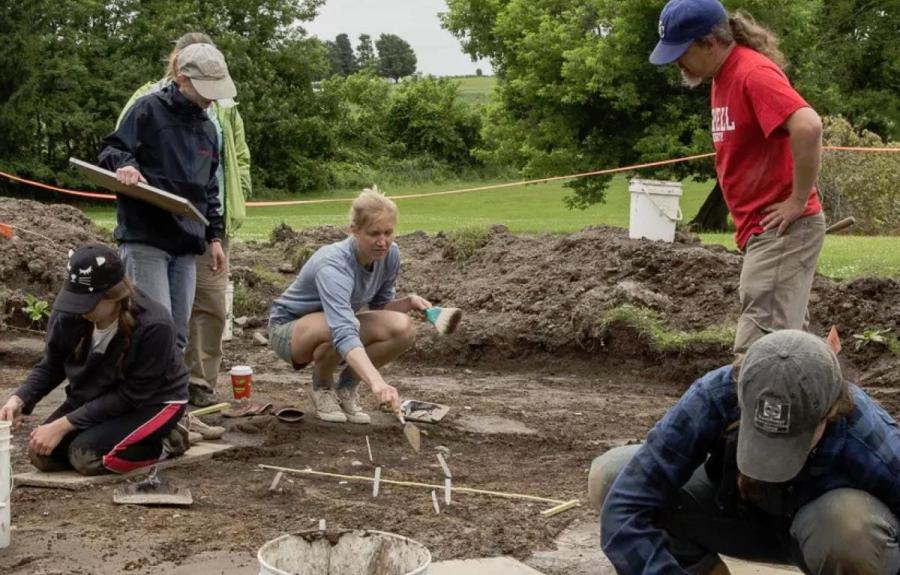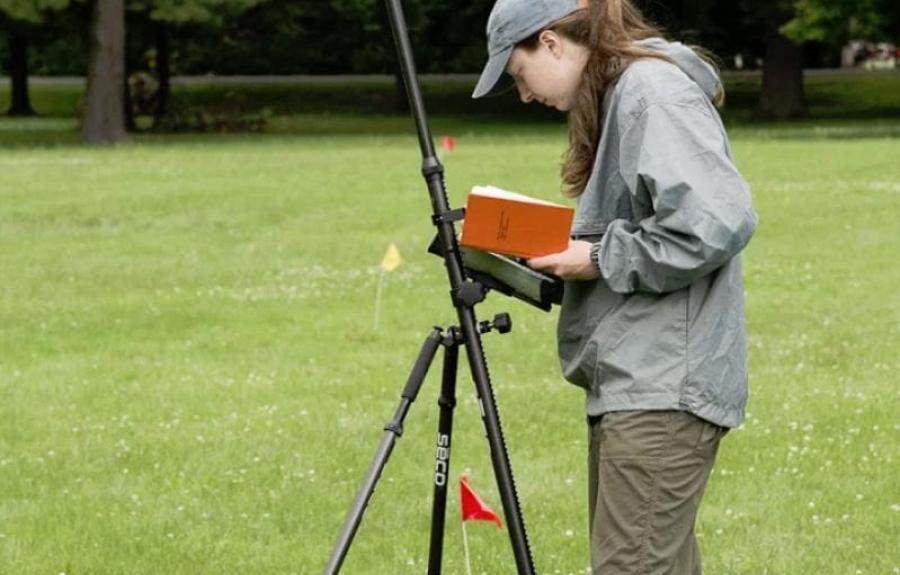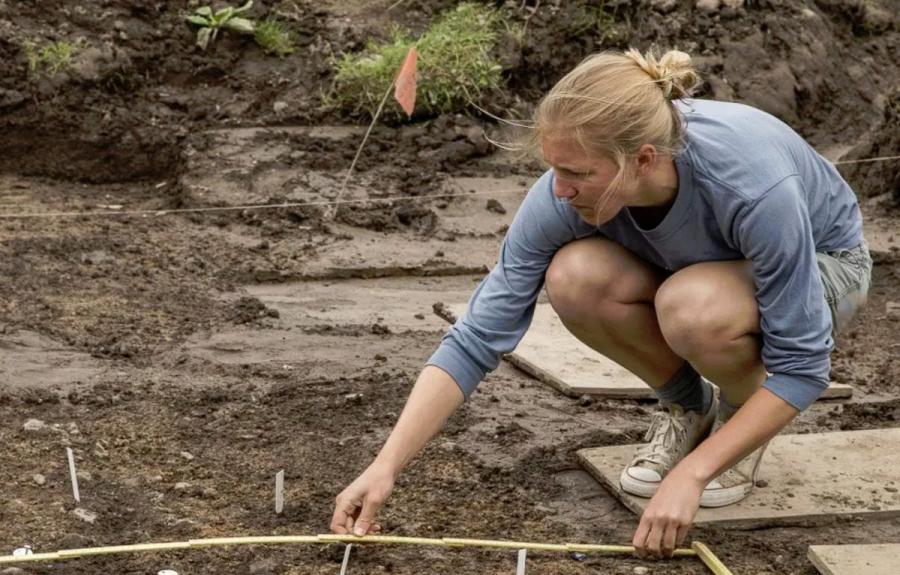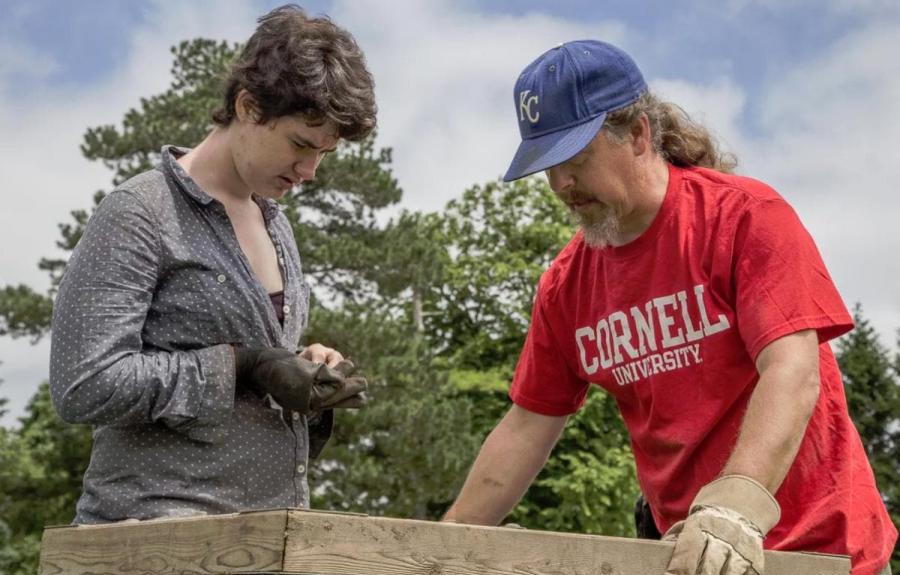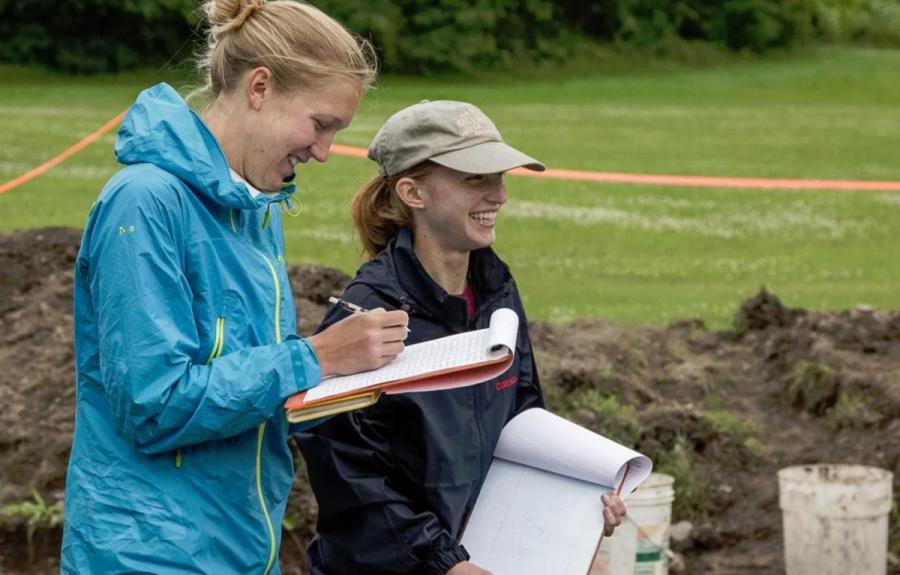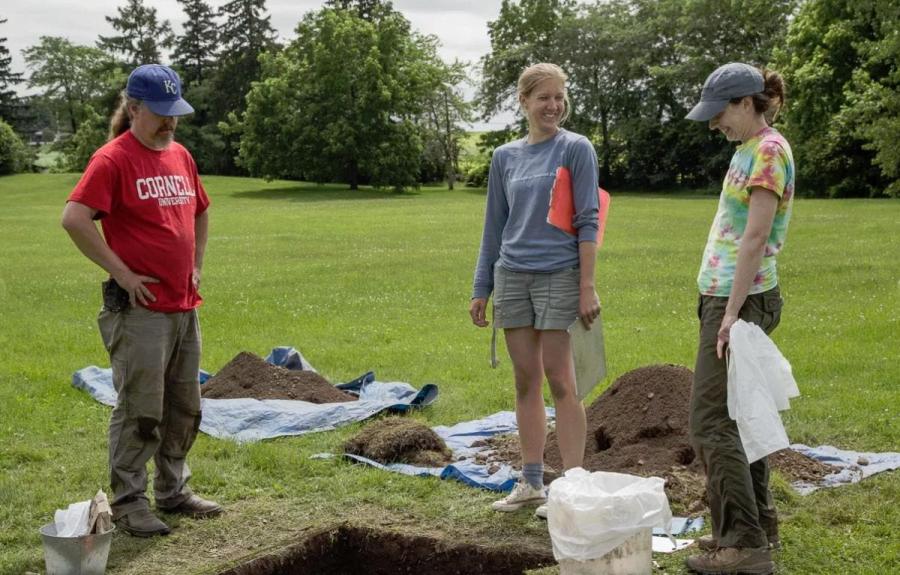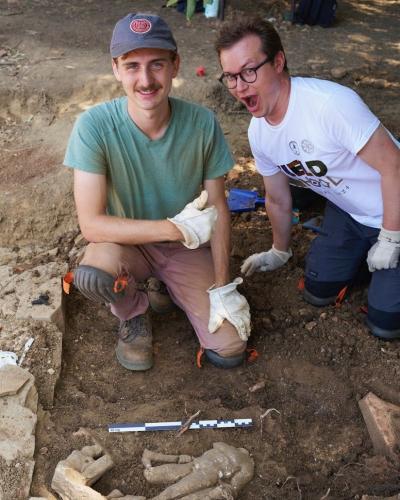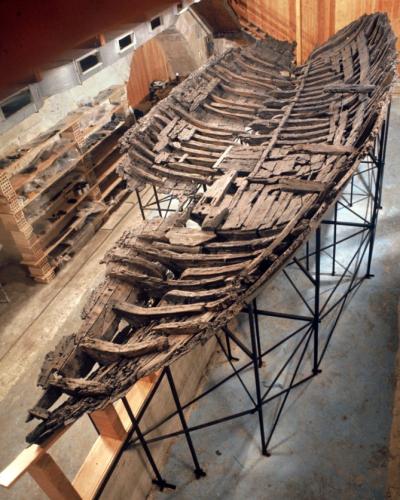White Springs was a Seneca Haudenosaunee (or Iroquois) town site occupied from approximately 1688 to 1715. The site is located near the present-day city of Geneva in Ontario County, New York. The White Springs Project was initiated by researchers from Cornell University and Ithaca College and Seneca partners in 2007 to use domestic-context archaeology to examine the local consequences of turbulent times. Research particularly focused on the impact of warfare and challenging political-economic conditions on Seneca community structure, house forms, and material practices.
Cornell-sponsored fieldwork took place at White Springs between 2007 and 2015. It consisted of shovel-test, test unit, and trench excavations, and surface investigation in plowed portions of the site. Ithaca College researchers conducted a multi-instrument, high-resolution archaeogeophysical survey of an area of over 12.4 acres in and around the site.
The photographs in this article are from the 2015 field season. The project is currently in the process of cataloging, analyzing, and writing up an account of the artifacts, animal and plant remains, and spatial information recovered from the site.
The White Springs team excavates the site.
Sam Sanft (Anthropology PhD Student) uses a dGPS to survey at White Springs.
Perri Gerard-Little (completed Anthropology PhD in Spring 2017) takes measurements at the excavation site.
White Springs director and CIAMS professor Kurt Jordan (right) and a Ellie Reppy (Class of 2017) screen at the excavation site.
Perri Gerard-Little and Cindy Kocik (Cornell Tree-Ring Laboratory) record data.
At CIAMS, we love what we do.
Many thanks to the photographer, Barbara Friedman.

